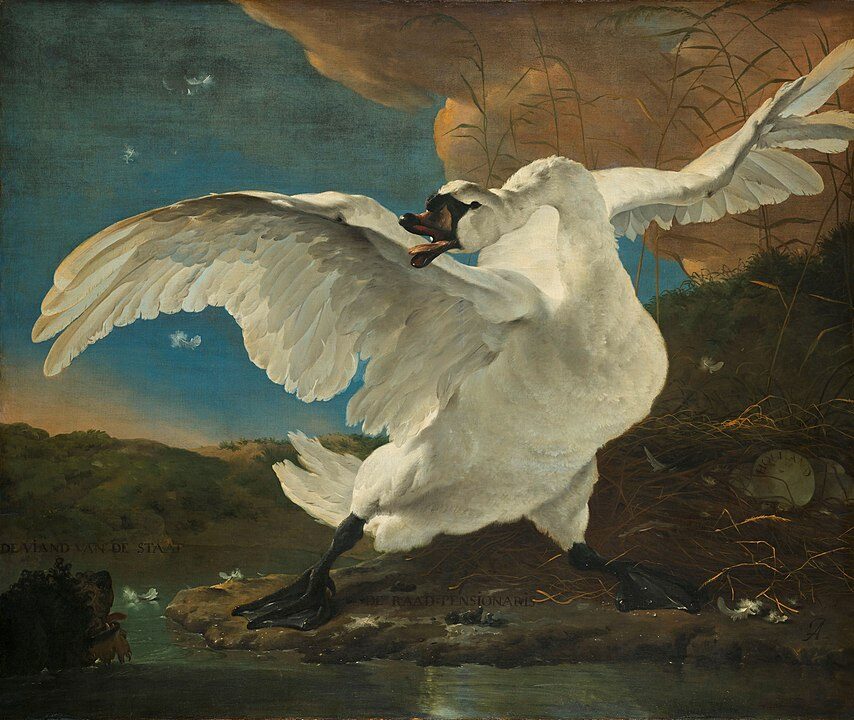MATERIALS
A 1-meter rod for a lever
An item for a fulcrum
A painting with a bird that flies or wants to fly
We chose «Τhe Τhreatened Swan» by the Dutch painter Jan Asselijn (1650)
An image or video from Leonardo da Vinci’s flying machines and especially the Ornithopter (https://www.youtube.com/watch?v=aZI85oreTew).
Stage 1- The painting as the first step
The teacher demonstrates the painting «The Threatened Swan» by the Dutch painter Jan Asselijn.
And he asks the children to describe the feelings expressed in the painting.
(Danger, fear, agony, escape from his natural environment)
What exactly is the swan’s natural environment (the lake)
Why does it want to escape? Why does it want to leave, what is the nature of the threat and the cause of fear? (Another animal, a hunter, a fire and an ecological disaster, etc.)
The aesthetics of the painting (colors, the light and where it is coming from, the contrast etc)
Stage 2 The action
The teacher encourages the students to pretend that they fly in the sky.
Movement in the space
The feelings are provoked by the swan’s fear and agony as we can see it in the painting.
The theatricality and drama desired can develop and evolve if relationships are established between students and the various roles they will be encouraged to play. E.g. If one of the children/swans is the mother or the father of another young bird/child that cannot fly yet and expresses its anxiety to be saved and the father/mother to save it.
Stage 3 The technology of flying
The flying machines of Leonardo da Vinci.
The first parachute and the ornithopter. How the mechanism works, how the wings are made, how they were made to work and sway up and down so they can fly.
We focus on the point where they are joined and, as levers that have the same fulcrum, they can move at the same time, in the same way, at the same speed and rhythm.
Stage 4- The lever
We now focus on the lesson which concerns the nature and function of levers. Their parts, their characteristics, their function, and the relation of forces and distances.
That e.g. if we have a lever with a length of 4m with the fulcrum in the middle, then as the parts are equal if we put the same weight at both ends (or if we apply the same force) the lever balances. If in one part the weight/force is slightly higher the lever closes towards the heavier weight. But if we transfer a little more weight to the lever then the lever balances again. So, there is a direct relationship between the distance from the fulcrum and the weight.

